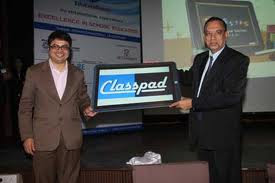Contents:
1.Distributed Computing (2 Lect.)
An Introduction, Definitions, The History of Distributed Computing, Different Forms of Computing, Strengths and Weaknesses of Distributed Computing, Basics of Operating Systems, Network Basics, The Architecture of Distributed Applications
2. Inter-process Communications (5 Lect.)
An Archetypal IPC Program Interface, Event Synchronization, Timeouts and Threading, Deadlocks and Timeouts, Data Representation, Data Encoding, Text-Based Protocols, Request-Response Protocols, Event Diagram and Sequence Diagram, Connection-Oriented versus Connectionless IPC
3. Distributed Computing Paradigms (3 Lect.)
Paradigms and Abstraction, An Example Application, Paradigms for Distributed Applications
4. The Socket API (5 Lect.)
Background, The Socket Metaphor in IPC, The Datagram Socket API, The Stream-Mode Socket API, Sockets With Nonblocking I/O Operations, Secure Socket API
5. The Client-Server Paradigm (6 Lect.)
Background, Client-Server Paradigm Issues, Software Engineering for a Network Service, Connection-Oriented and Connectionless Servers, Iterative Server and Concurrent Server, Stateful Servers
6. Group Communication (4 Lect.)
Unicasting versus Multicasting, An Archetypal Multicast API, Connectionless versus Connection Oriented Multicast, Reliable Multicasting versus Unreliable Multicasting, The Java Basic Multicast API, Reliable Multicast API
7. Distributed Objects (4 Lect.)
Message Passing versus Distributed Objects, An Archetypal Distributed Object Architecture, Distributed Object Systems, Remote Procedure Calls, Remote Method Invocation, The Java RMI Architecture, The API for the Java RMI, A Sample RMI Application, Steps for Building an RMI Application, Testing and Debugging, Comparison of RMI And Socket APIs
8. Internet Applications (2 Lect.)
Web Session and Session State Data
9. The Common Object Request Broker Architecture (6 Lect.)
The Basic Architecture, The CORBA Object Interface, Inter-ORB Protocols, Object Servers and Object Clients, CORBA Object References, CORBA Naming Service and The Interoperable Naming Service, CORBA Object Services, Object Adapters, Java IDL
10. Web Services (11 Lect.)
The Simple Object Access Protocol (SOAP), JAX-WS, RESTFUL WEB SERVICES
Text Books:
- M. L. Liu, “Distributed Computing Principles and Applications”, Pearson Education
- Mark Hansen, “SOA using JAVA Web Services”, Prentice Hall
Other Reference Books:
- Crichlow, “Distributed Systems: Computing over Networks”, PHI
- Tanenbaum, Sten, “Distributed Systems - Principles and Paradigms”, PHI
- Puder, “Distributed Systems Architecture - A Middleware Approach”, Science & Technology Books
- Lynch, “Distributed Algorithms” Science & Technology Books





 Posted in:
Posted in: 







